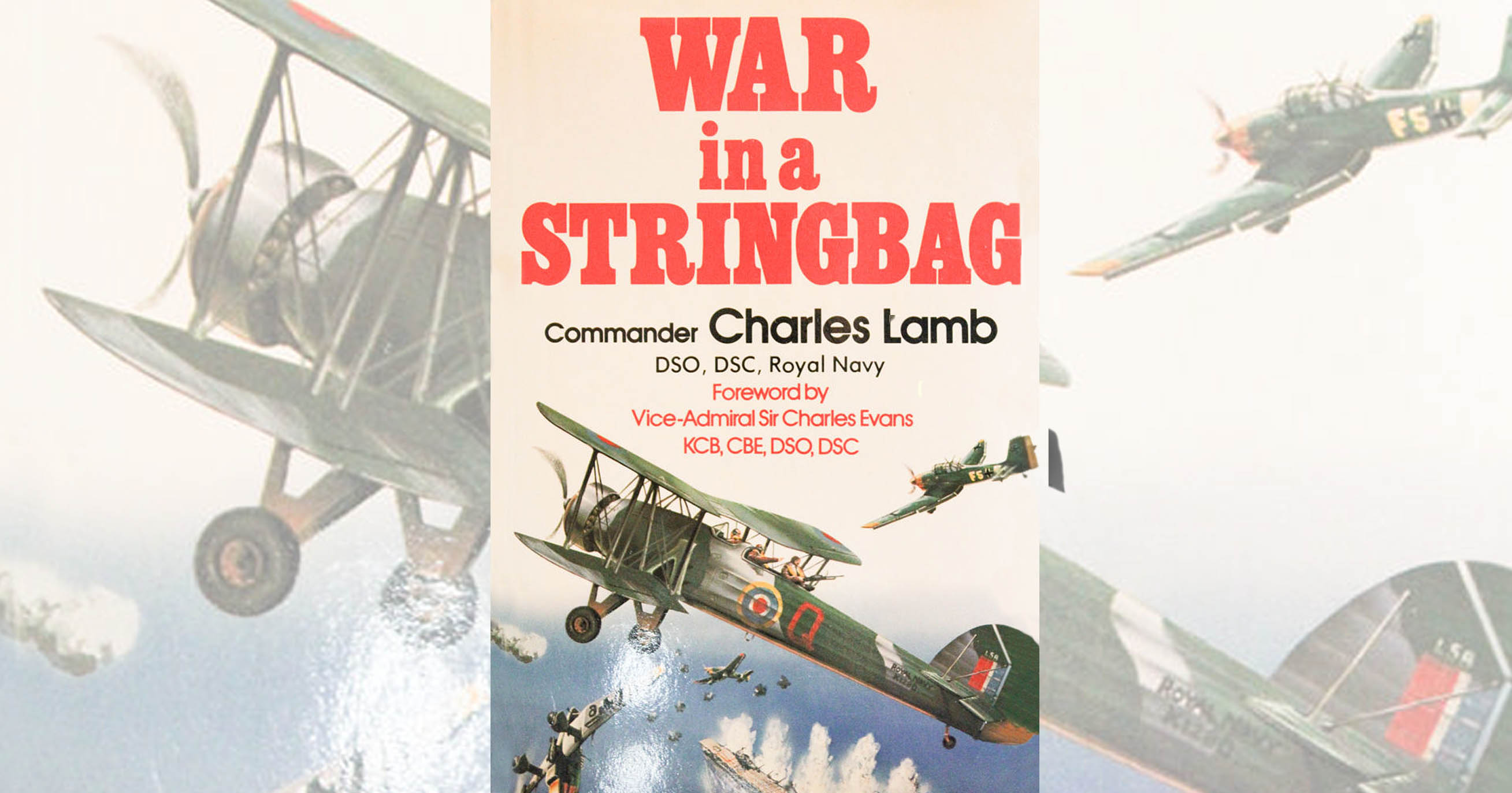To War in a Stringbag by Commander Charles Lamb, Royal Navy, DSC, DSO
To War in a Stringbag is the extraordinary autobiography of an extraordinary naval aviator, Commander Charles Lamb, who experienced combat from the first days of World War II until the final stages of the Pacific campaign. “Stringbag” was the nickname of the legendary Fairey Swordfish, a seemingly obsolete biplane that was responsible for destroying a greater tonnage of enemy shipping than any other torpedo bomber during the war, and which Lamb flew into combat for more than two years.
Lamb recounts exploits that are nothing short of jaw-dropping. Flying an airplane that looked better suited to World War I, he participated in enough combat to have killed off half a dozen fliers. After his first carrier, HMS Courageous, was sunk by U-29 on September 17, 1939, he flew his Swordfish from land bases, sowing mines off the German coast and attacking E-boats off Dunkirk. Transferred to the new carrier Illustrious, Lamb then began operations in the Mediterranean, including serving as a pathfinder pilot during the famous attack on the Italian fleet at Taranto on November 11, 1940. After surviving repeated air attacks on Illustrious, which nearly destroyed the ship and killed many of his friends, Lamb continued flying combat missions out of land bases in Malta, Greece, Albania, Crete and Egypt. On one occasion during the Greek campaign, he managed to destroy two Italian fighters by outmaneuvering them and causing them to collide with each other, a victory of pure airmanship of which he was justly proud, and which he insisted could only have been accomplished in the incredible Swordfish.
After crashing while delivering a secret agent into Algeria in a nighttime flight, Lamb spent more than a year in Vichy French POW camps—an experience he found every bit as unpleasant as it would have been under the Germans, and possibly worse. Released late in 1942 after the Allies invaded North Africa, he was promoted to assistant flight officer on the new carriers Implacable and Indefatigable, participating in the attacks on the German battleship Tirpitz in Norway, and in operations against the Japanese in the Indian and Pacific oceans. In July 1945, just before the war ended, Lamb was struck by a shattered propeller blade on the flight deck, suffering injuries that hospitalized him for the next two years.
To War in a Stringbag is written in a wry, humorous style that seems characteristically British. The wonder isn’t that Lamb managed to write such a fascinating and entertaining book, but that he survived the war at all. It’s clear he didn’t write his memoir to celebrate his own achievements; rather, he sought to memorialize the companions with whom he had served, many of whom did not live to tell their stories. To that end, To War in a Stringbag remains a classic account of the Fleet Air Arm activities throughout the conflict.
Originally published in the September 2013 issue of Aviation History. To subscribe, click here.





